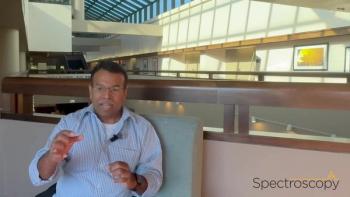
ALICE Finally Sent "To the Moon"
A custom-engineered spectrometer from Ocean Optics is part of the scientific payload on NASA's LCROSS mission that was launched on June 18, 2009.
A custom-engineered spectrometer from Ocean Optics (Dunedin, Florida), part of the scientific payload on NASA’s Lunar CRater Observation and Sensing Satellite (LCROSS) mission, was successfully launched into space Thursday from the Kennedy Space Center in Cape Canaveral, Florida. “ALICE,” as the spectrometer is affectionately known, was drafted for the mission to help analyze the makeup of the lunar craters, with the goal of locating water below the moon’s surface.
The Centaur rocket carrying LCROSS is expected to reach the moon next week and the two will remained coupled for the next four months -- until the next exciting phase in the mission, scheduled for October 9, 2009. The units will then separate, sending the rocket crashing into the moon at more than twice the speed of a bullet. After the rocket impact, expected to generate a 2.2 million-pound plume of matter, another spacecraft carrying ALICE will fly through, looking for signs of water and other compounds.
In partnership with Aurora Design & Technology (Clearwater, Florida), whose work included development of the reflectance viewing optics for the mission, Ocean Optics adapted its highly sensitive QE65000 Spectrometer to survive the harsh conditions of this mission -– extreme temperature ranges and radiation, as well as significant shock and vibration.
ALICE will measure the reflectivity of the ejecta cloud as it rises into the sunlight, enabling scientists to distinguish between water vapor, water ice, and hydrated minerals (such as salts or clays) with molecularly bound water. With a wavelength range of 270-650 nm and an optical resolution of less than 1.0 nm, ALICE will be able to identify, with a high degree of accuracy, ionized water (visible at 619 nm), OH radicals (visible at 308 nm) and other organic molecules containing carbon. Though the measurements are to be taken from the dark region of the moon where light is scarce, the unit’s back-thinned detector makes the most of the light available.
Water hidden deep in the moon’s craters could mean drinking water or even the ability to break down the hydrogen and oxygen molecules into rocket fuel, laying the foundation for the moon as a staging point for further space exploration. The progress of ALICE and LCROSS can be tracked on the mission’s website, www.nasa.gov/mission_pages/LCROSS/main/index.html.
This is the second NASA collaboration for Ocean Optics. A unit designed around the company’s HR-Series spectrometers will be part of the 2009 ChemCam Mars mission to study rock and soil composition on the red planet.
Newsletter
Get essential updates on the latest spectroscopy technologies, regulatory standards, and best practices—subscribe today to Spectroscopy.





